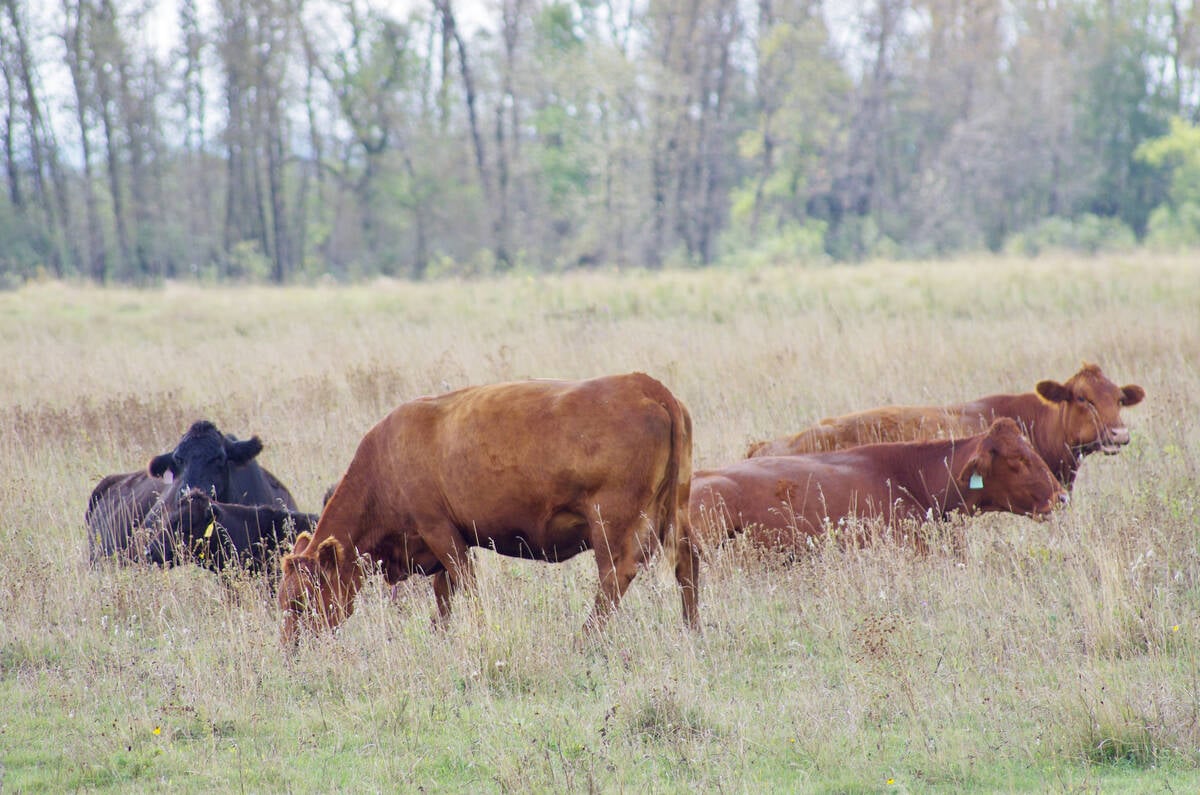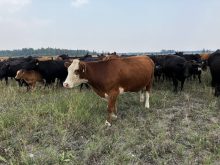U.S. live cattle futures posted modest losses on Thursday after profit taking in a technically overbought market pulled contracts from a fresh six-month high, analysts and traders said.
Chicago Mercantile Exchange (CME) live cattle investors were also nervous about next week’s cash cattle price direction after stronger-than-expected cash values late Wednesday pushed October futures to a new contract high for a second straight day on Thursday.
October live cattle closed down 0.15 cent at 127.55 cents and marked a new contract high of 128.775 cents in after-hours trading. December fell 0.35 cent, to 130.35 cents (all figures US$).
Read Also

U.S. livestock: Chicago cattle futures climb on post-Thanksgiving trade
Chicago | Reuters – Chicago Mercantile Exchange’s live and feeder cattle futures ticked up on Friday in a day of…
October’s relative strength index was slightly above 70, a region which indicates that market is overbought.
Wednesday evening, cash cattle moved at $126 to $127 per hundredweight, up $2 to $3 from a week ago. Tight supplies forced packers to spend more for cattle, further eroding their operating margins.
"Their margins are in the red and they have to squeeze end users as hard as possible. Kill cutbacks are a given now," said Hales Trading Co. president David Hales.
HedgersEdge.com estimated the average beef packer margin for Thursday at negative $24.65 per head, compared with positive $0.75 on Sept. 6.
So far this week, the industry processed an estimated 500,000 head of cattle, 25,000 fewer than the same period a year ago, according to the U.S. Department of Agriculture.
Thursday morning, the government pegged the wholesale choice beef price at $191.55/cwt, down 16 cents from Wednesday, and select cuts gained 28 cents to $179.98.
Meanwhile, funds implementing the Goldman roll at times pressured October live cattle but limited back-month losses.
Thursday was the fourth of five days for the roll with funds that follow the Standard + Poor’s Goldman Sachs Commodity Index rolling some of their October long positions into deferred months.
Spot September CME feeder cattle ended up 0.05 cent at 145 cents, supported by ideas about where it would settle when it expires on Sept. 27.
Remaining trading months landed in negative territory as the weak live cattle market and profit-taking weighed.
Most-actively traded October closed down 0.350 cent at 147.025 cents and November finished at 148.650 cents, down 0.150 cent.
Hogs gain
CME hogs posted modest gains, drawing support from speculative buyers who contend Thursday’s higher cash prices signal an end to the recent slide in cash hog values, said analysts and traders.
October closed up 0.125 cent to 73.55 cents and December ended at 72.375 cents, up 0.025 cent.
USDA on Thursday quoted the average hog price in the most-watched Iowa/Minnesota market at $63.91, up 58 cents.
"There is a group of people who look at that (Iowa price)and say we’re forming a bottom and working on a rally. I’m in the camp that believes we’re at a premium to cash," said independent CME hog futures trader James Burns.
Iowa’s hog price on Thursday halted a 12-day skid as producers rushed hogs to market after the worst drought in more than half a century pushed feed costs to all-time highs.
Cooler weather was creating less stress on hogs while increasing their appetites, allowing them to reach desired market weights faster.
Packers so far this week processed 1.74 million hogs, 46,000 more than during the same period a year ago, according to USDA estimates.
— Theopolis Waters writes for Reuters from Chicago.















